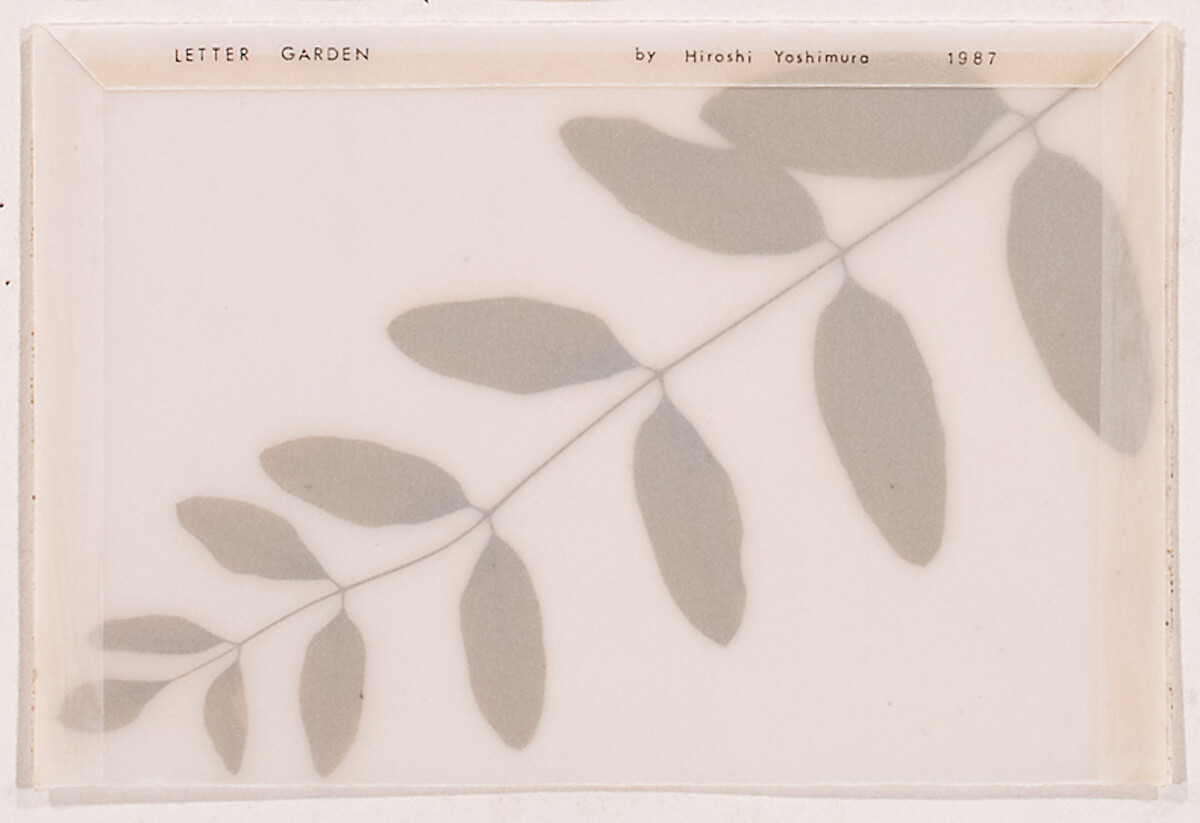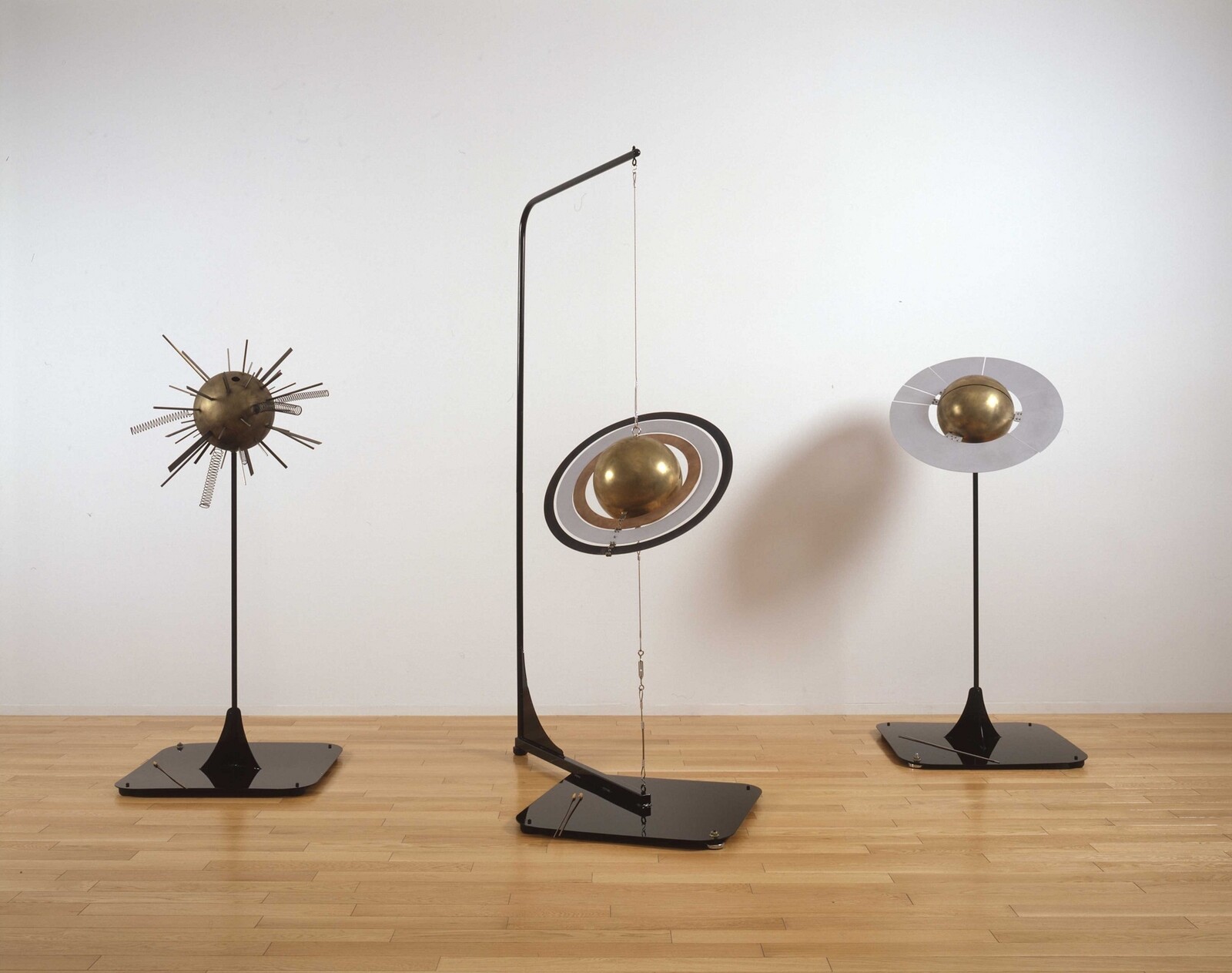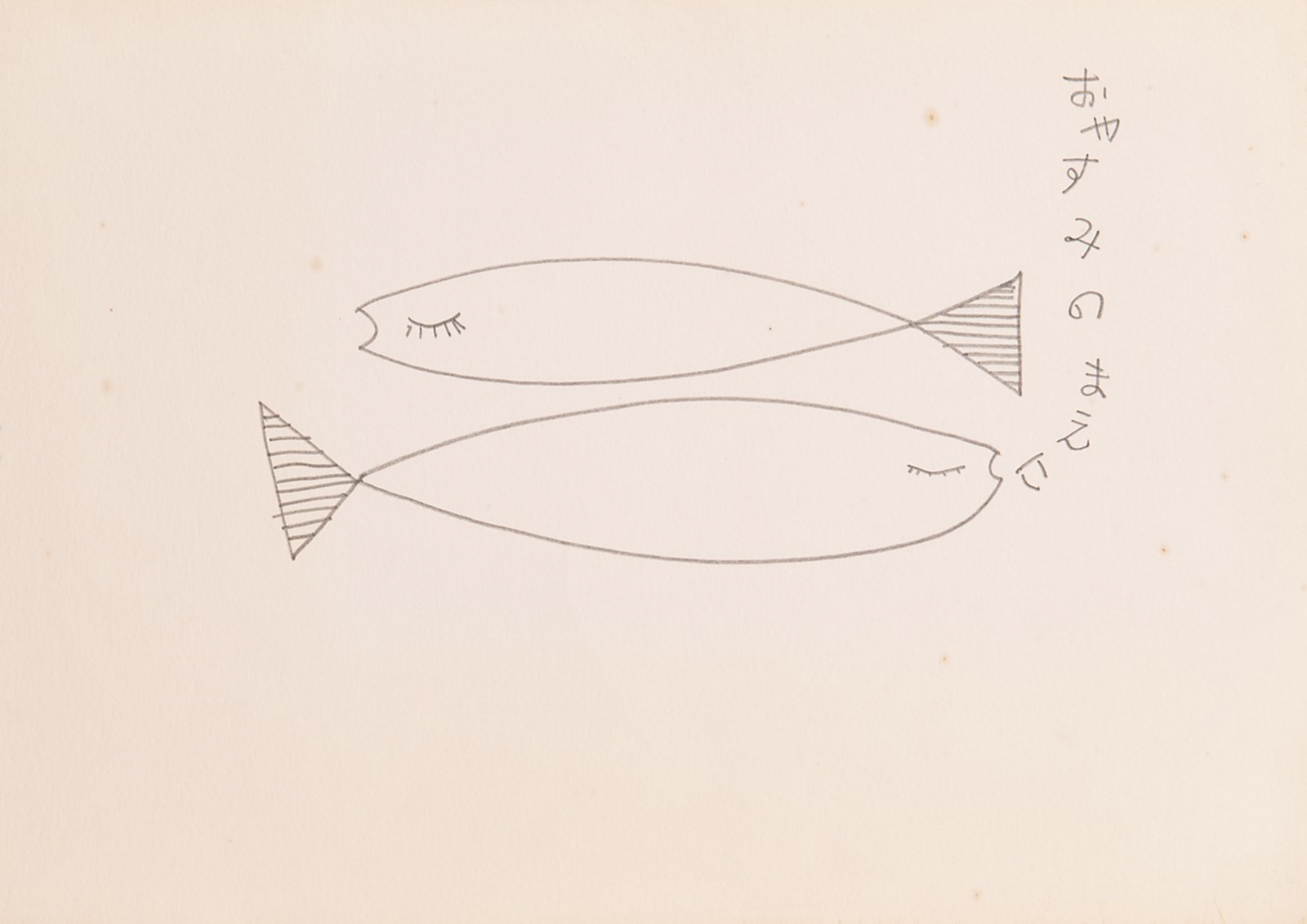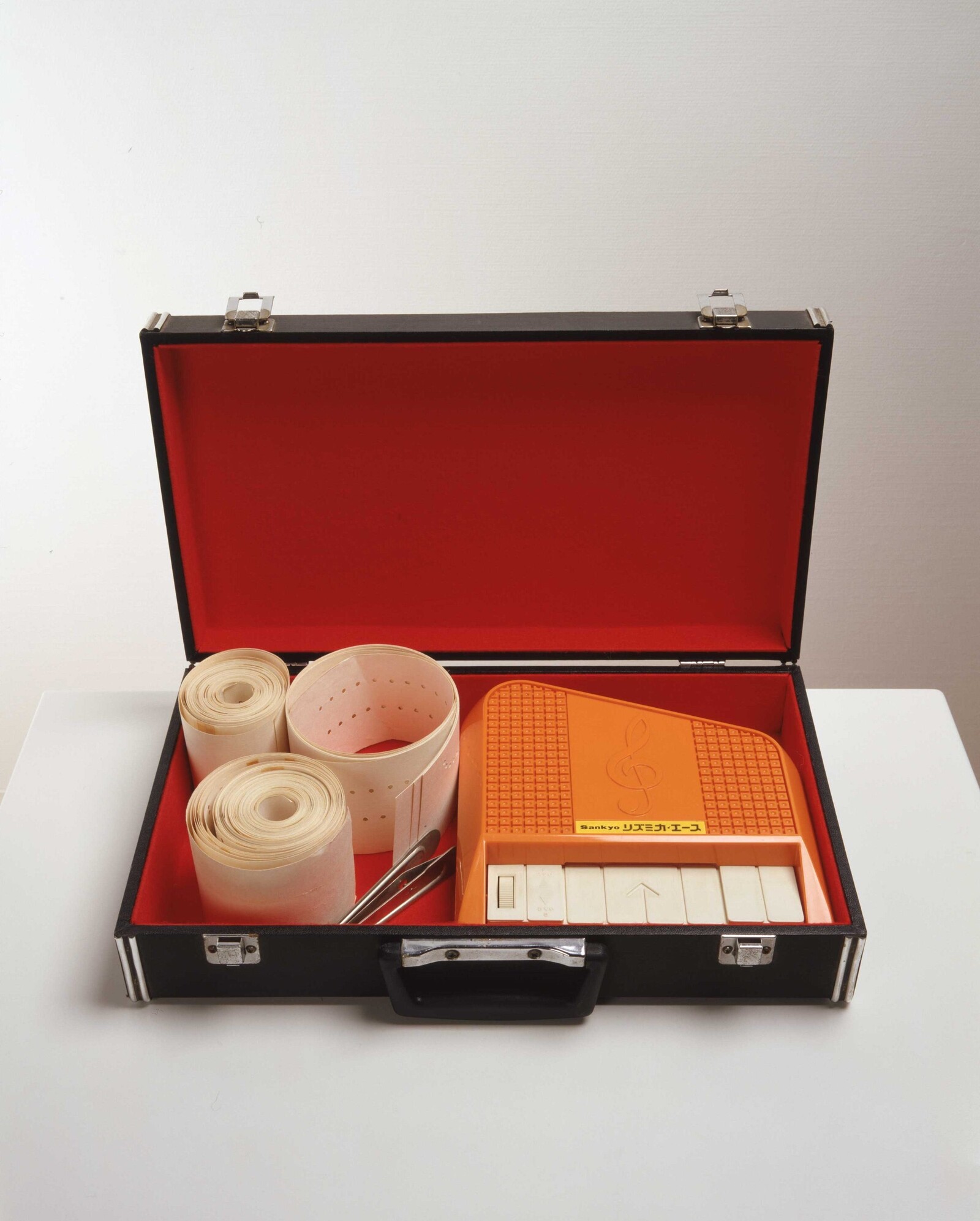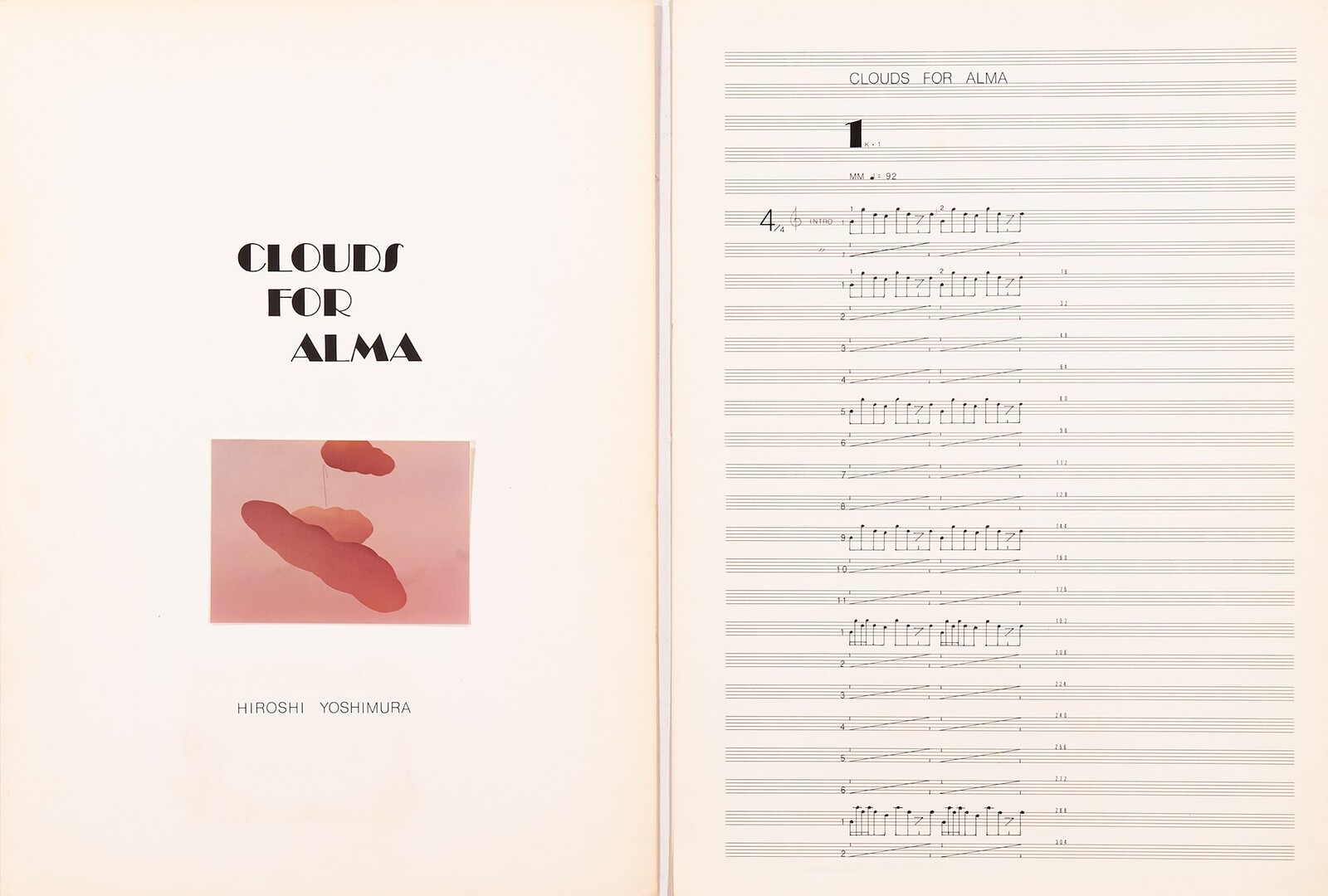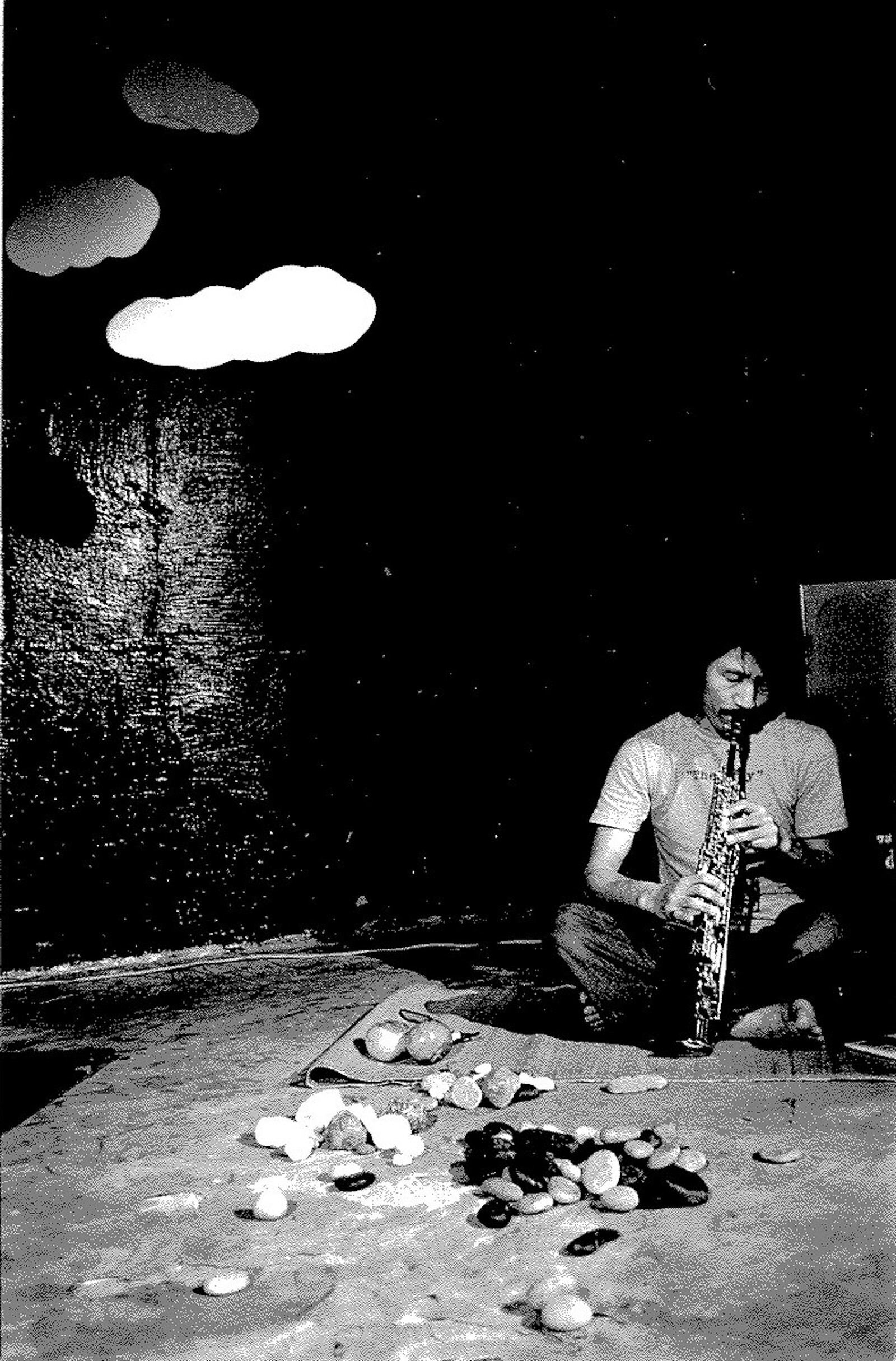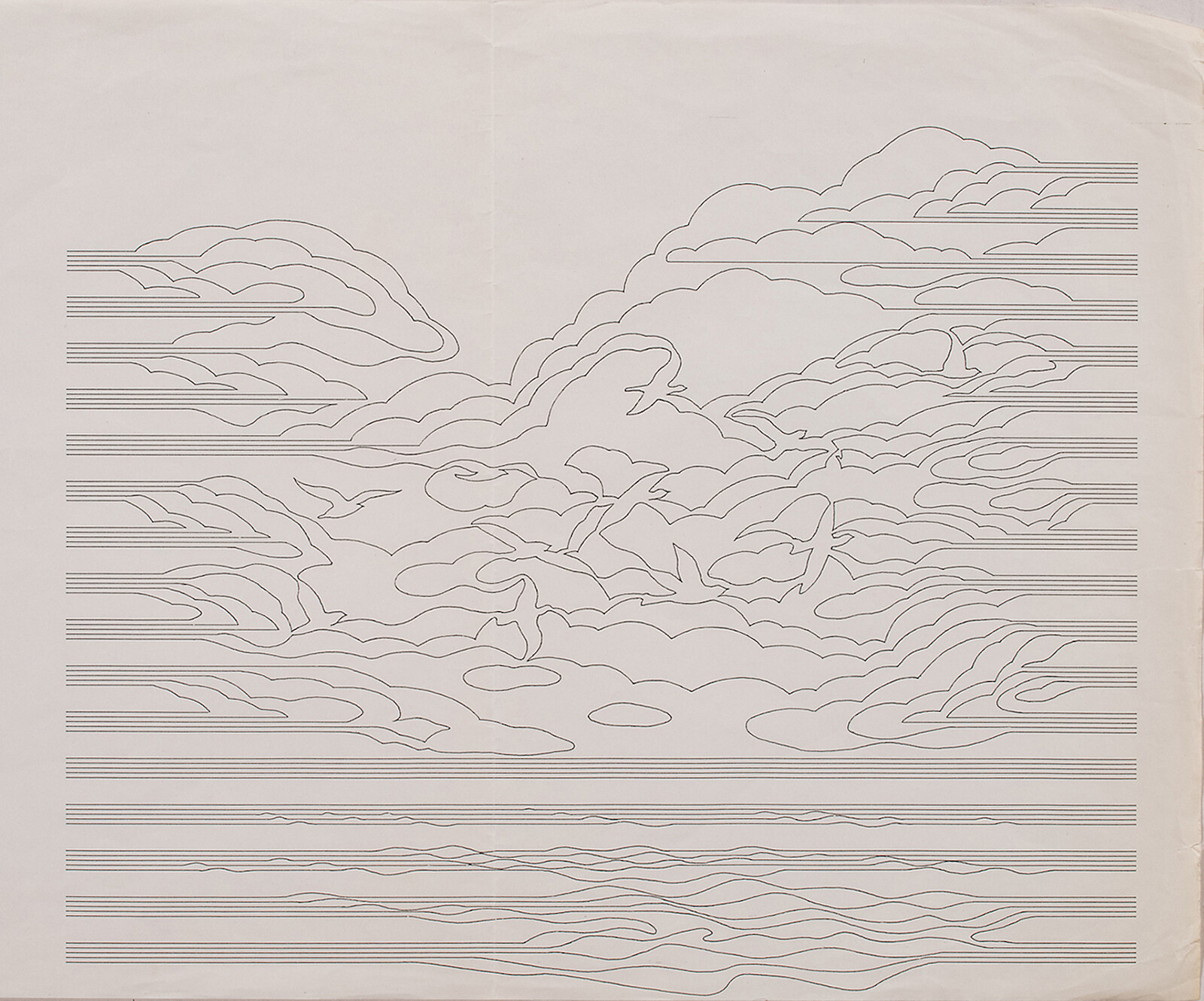April 29–September 3, 2023
While the artist and pioneering ambient composer Hiroshi Yoshimura was recording his debut album, in 1982, he visited the Hara Museum of Contemporary Art in Tokyo, which had opened a few years before. Struck by how this curving Art Deco building framed a series of views onto tree-lined gardens, he approached a curator about the possibility of playing his record in the galleries. They agreed, and so Yoshimura’s first album—titled Music for Nine Post Cards—also became his first public commission. Made in a home studio on a Fender Rhodes electric piano, this collection of glistening vignettes is one of my favorite albums, nine sketches of a museum informed not by its artworks but by glimpses through its windows.
The track titles—“Clouds,” “Blink,” “Dream”—read like a list of the motifs and compositional approaches that would preoccupy Yoshimura for the rest of his life. Over the course of the next three decades, he produced dozens of acoustic soundscapes, meditative site-specific compositions for locations all over Japan: shopping malls; a subway line; even a funicular, the written score climbing at the same twenty-two-degree incline as the actual mountainside. Yoshimura’s was an unusual mode of public art. Small-scale but also spacious, it had nothing in common with, say, Richard Serra’s Tilted Arc (1981). Instead, it might be a distant cousin to I Got Up (1968–79), the postcard series by Yoshimura’s rough contemporary On Kawara. Informed by time and by place, this is communication or composition as a daily practice of personal address.
Yoshimura’s last work was another of his many museum pieces, a quartet of “sound logos” for the Museum of Modern Art, Kamakura & Hayama, in 2003. These gentle tones and twinkles were played twice daily, to mark the opening and closing of the galleries. (The original graphic score comprises photographs of the nearby beach as well as the ponds in the neighboring Shinto shrine, annotated with geometric symbols, shapes dotting the horizon or rippling out from lily pads.) This retrospective at the museum’s Kamakura Annex includes more than 200 works and archival materials, many from its own collection. It explores a practice that was more varied than the public commissions might suggest, encompassing video, kinetic sculptures, performances and artists’ books. Deftly curated by Konagi Matsuo, Saki Nagato, and Tomoyo Sanbonmatsu, the exhibition traces Yoshimura’s soundscapes of the 1980s and ’90s while back to his formative years amid the ferment of Tokyo’s ’60s avant-garde.
As a student, Yoshimura had absorbed Erik Satie’s notion of “furniture music” (a term coined in 1917, referring to sounds intended to be heard rather than listened to), and later encountered John Cage by way of his influential visit to Japan in 1962. At the Kamakura Annex, we see Yoshimura’s preoccupation with windows and natural forms emerge around this time, via experiments with concrete poetry, flipbooks and cutely illustrated graphic scores. These solitary-feeling pieces open out in the mid-1970s, when he met the drone collective the Taj Mahal Travellers, becoming more collaborative and improvisational. We see documentation of performances in rocky coves and in snowy fields, of durational events accompanied by homemade instruments fashioned from Asahi beer cans.
Yoshimura remains absent from many accounts of postwar Japanese art. But he has in recent years reached a wider audience via the jewel-like ambient records he released in the 1980s, which have been lovingly reissued by Light in the Attic Records. This music came to be known as kankyō ongaku (environmental music), a term first applied to Brian Eno’s Music for Airports (1978). Two decades later, Yoshimura could be found composing music for a literal airport, in Osaka. If the sources of Yoshimura’s patronage sometimes seem surprising, it helps to know that tax incentives had made cultural commissions attractive to corporations. His 1984 record A · I · R (Air In Resort) promoted a Shiseido fragrance, for example, while the Soundscape 1: Surround (1986) was the soundtrack for show homes by Misawa Homecorp.
A persistent critique of ambient music frames it as little more than a bland soundtrack to optimized productivity, or a salve for burnout. Indeed, while Yoshimura’s albums and public commissions were intended as an antidote to the speed and speculation of Japan’s bubble years, they were enmeshed in that same economy. For me, though, their special quality is locating glimmers of stillness and light in unexpected places, whether an aquarium or faceless plaza. His is a music of patience and attentiveness. The exhibition closes with a suite of illustrated scores, some several meters long. Each time, the stave’s horizontal lines begin to vibrate, before metamorphosing into trees, flocks of birds or passing clouds, a landscape in miniature—a seed, a postcard, a score.
